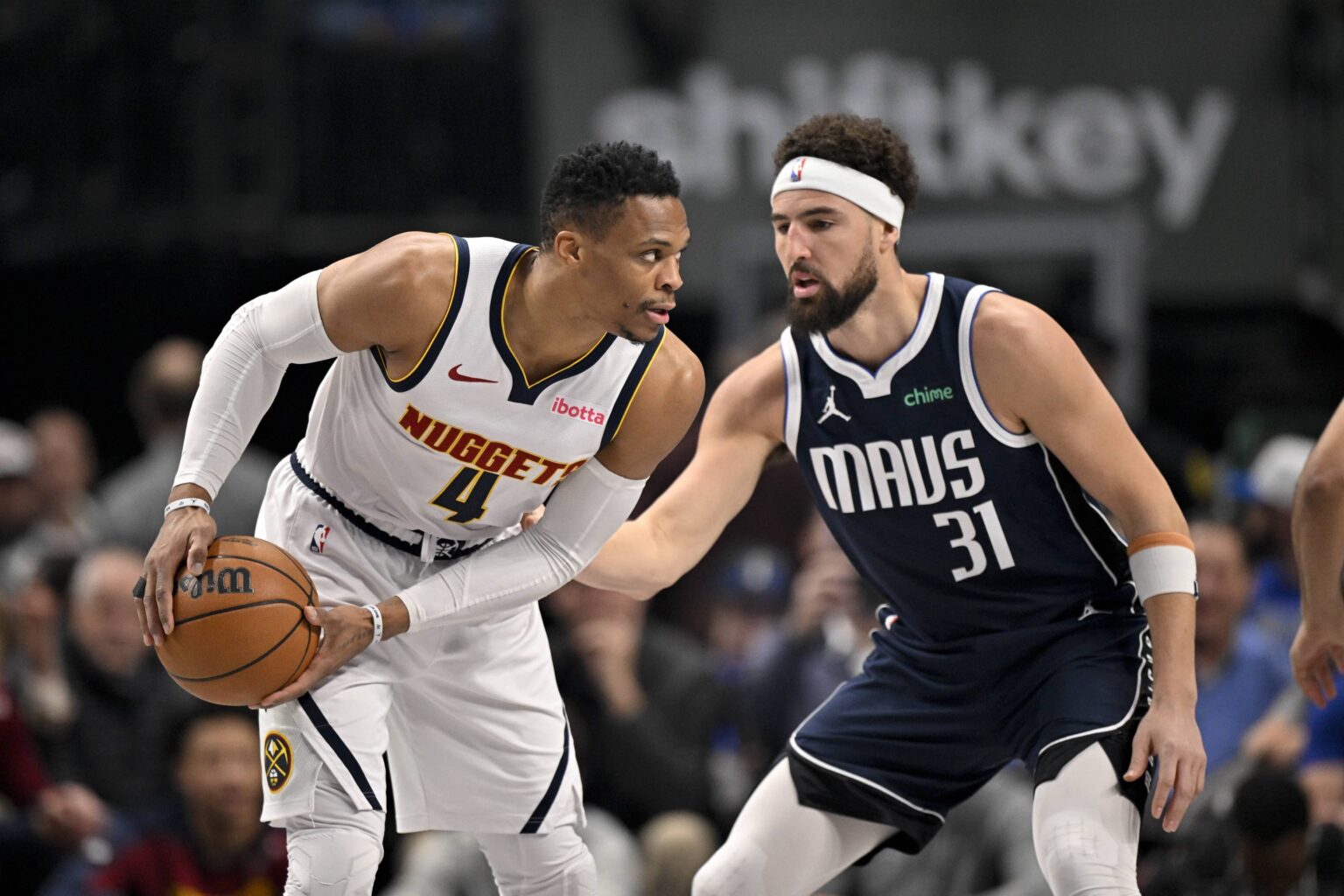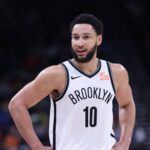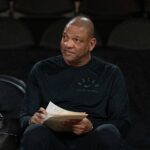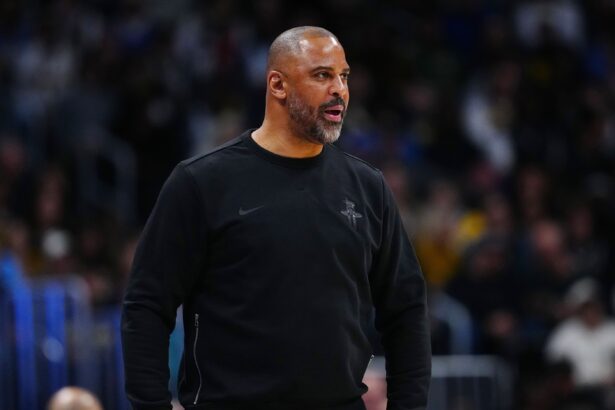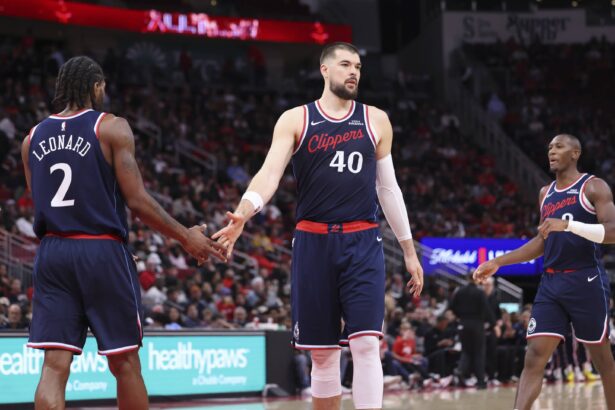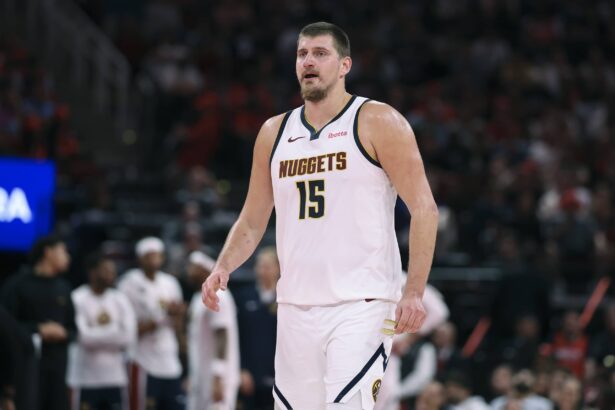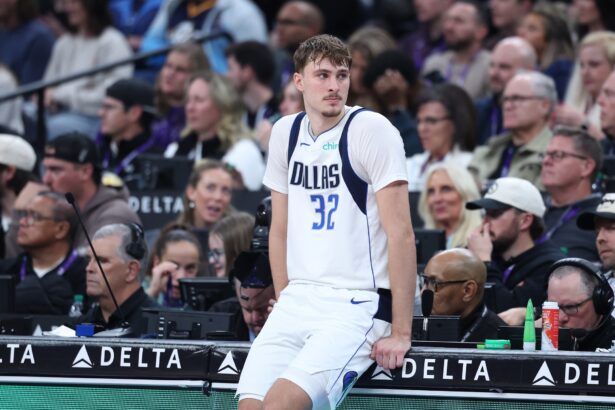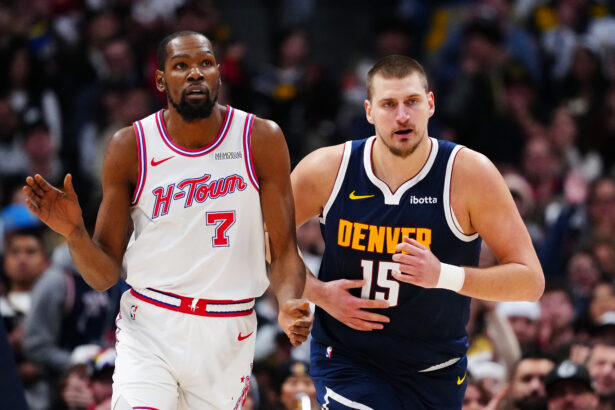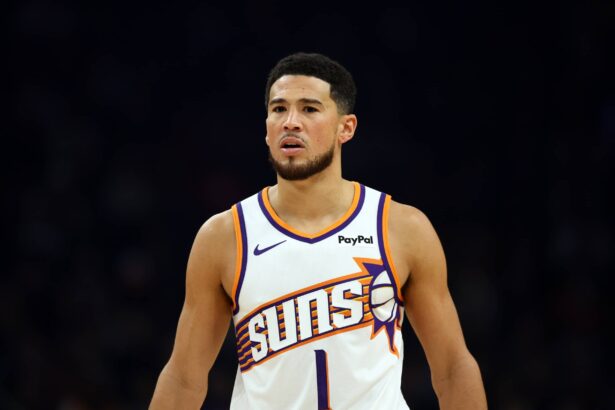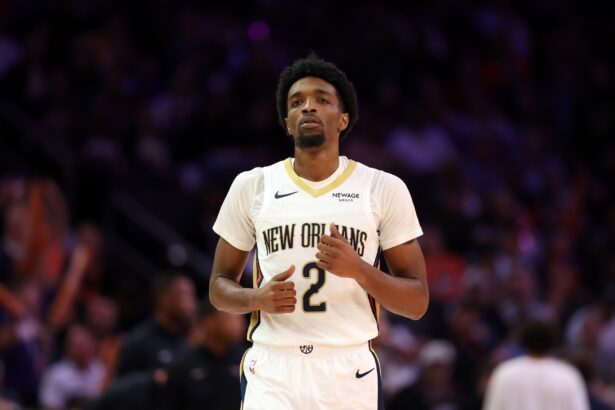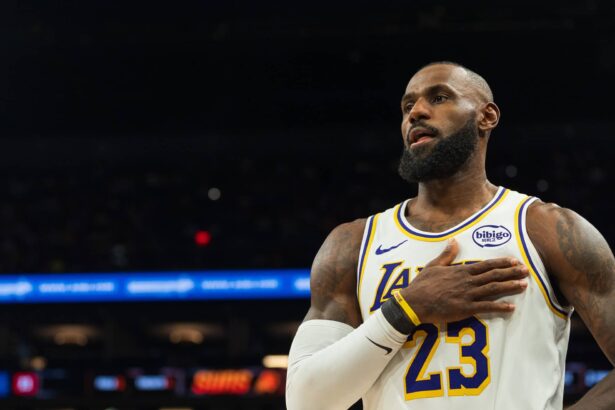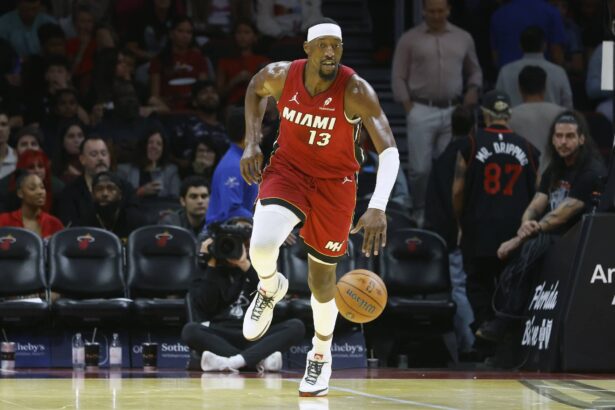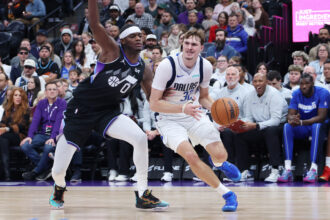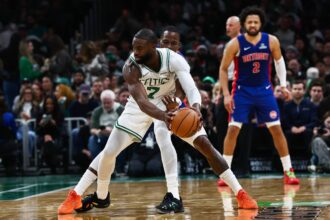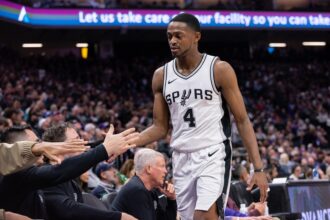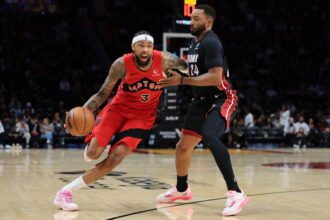The NBA is no stranger to shocking storylines, but few moments are more intriguing than when a star player in their prime finds themselves benched—not due to a lack of talent, but because of team dynamics, coaching decisions, or even strategic front-office moves.
- 1. Carmelo Anthony – (Houston Rockets, 2018)
- 2. Allen Iverson – (Detroit Pistons, 2009)
- 3. Manu Ginobili – (San Antonio Spurs, 2007)
- 4. Russell Westbrook – (Los Angeles Lakers, 2022)
- 5. Bradley Beal – (Phoenix Suns, 2025)
- 6. Andre Iguodala – (Golden State Warriors, 2015)
- 7. Amar’e Stoudemire – (New York Knicks, 2013)
- 8. Isaiah Thomas – (Cleveland Cavaliers, Los Angeles Lakers, 2018)
- 9. Josh Smith – (Houston Rockets, 2015)
- 10. Gilbert Arenas – (Orlando Magic, 2011)
Take the Phoenix Suns, for instance. In their quest to balance the trio of Kevin Durant, Devin Booker, and Bradley Beal, it came out that Beal was surprisingly relegated to the bench and it created quite a stir in the media.
It could be a strategy to optimize the offense by reducing ball-dominant players or part of a larger play to convince Beal to waive his no-trade clause in a potential deal for Jimmy Butler. Whatever it is, such a decision does affect the player’s legacy since he is only 31 years old and still in his prime.
This phenomenon isn’t new, though. Several other star players have been benched in their primes—players who could still start on any team in the league but were sidelined for the greater good. Here’s a look at ten of the most notable cases, noting that stars such as Kevin McHale won’t count because they started their careers as sixth men and were not benched suddenly for any particular reason.
1. Carmelo Anthony – (Houston Rockets, 2018)
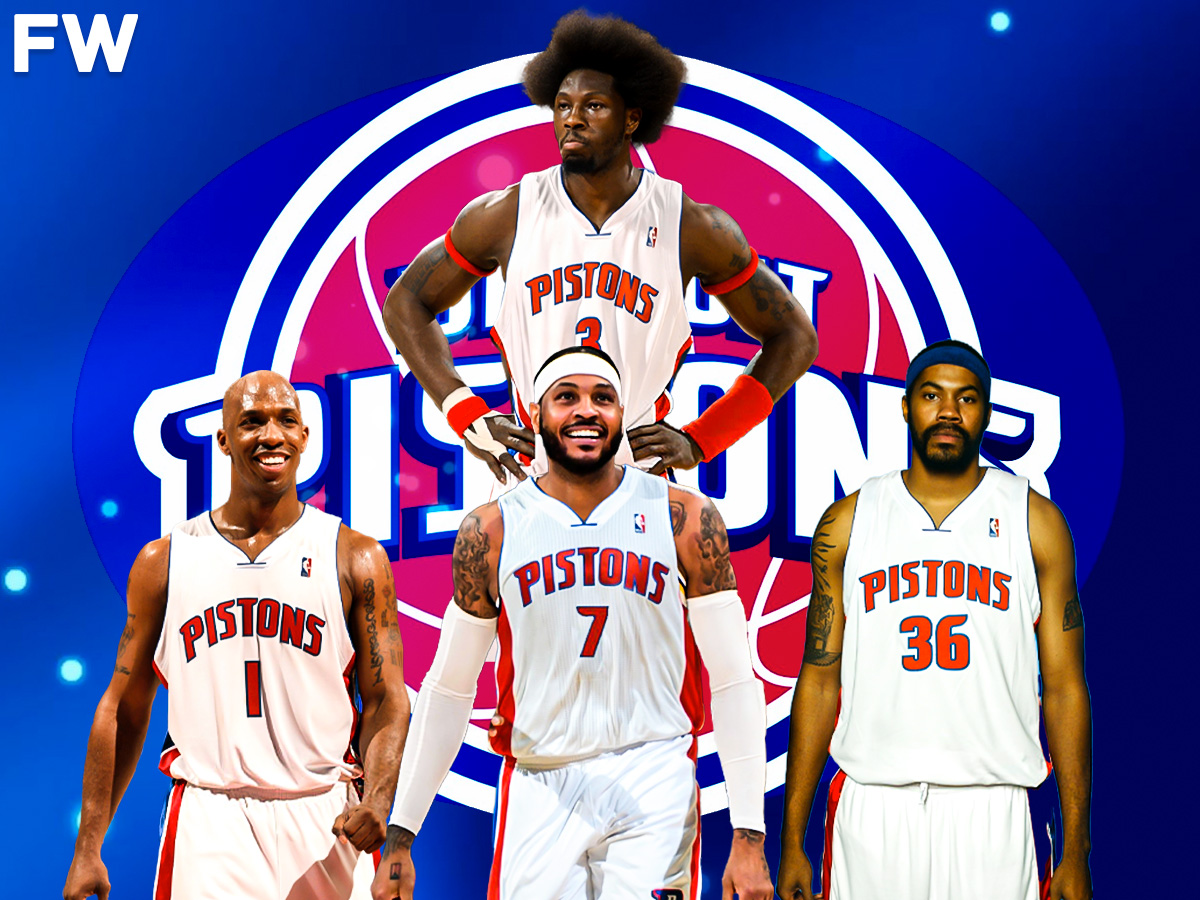
A ten-time All-Star and one of the most prolific scorers of his generation, Carmelo Anthony’s benching in Houston was one of the most shocking NBA storylines of 2018. After signing with the Rockets in hopes of chasing a title, Melo struggled to adapt to a reduced role under coach Mike D’Antoni’s system.
In just 10 games, Anthony averaged 13.4 points and 5.4 rebounds per game but shot an uncharacteristic 40.5% from the field. The Rockets decided his defensive limitations outweighed his offensive output, and Melo was benched and later released. The move marked a turning point in his career, forcing him to reinvent himself as a role player in later years and he managed to extend his career in a bench role for the Portland Trail Blazers and Los Angeles Lakers.
2. Allen Iverson – (Detroit Pistons, 2009)
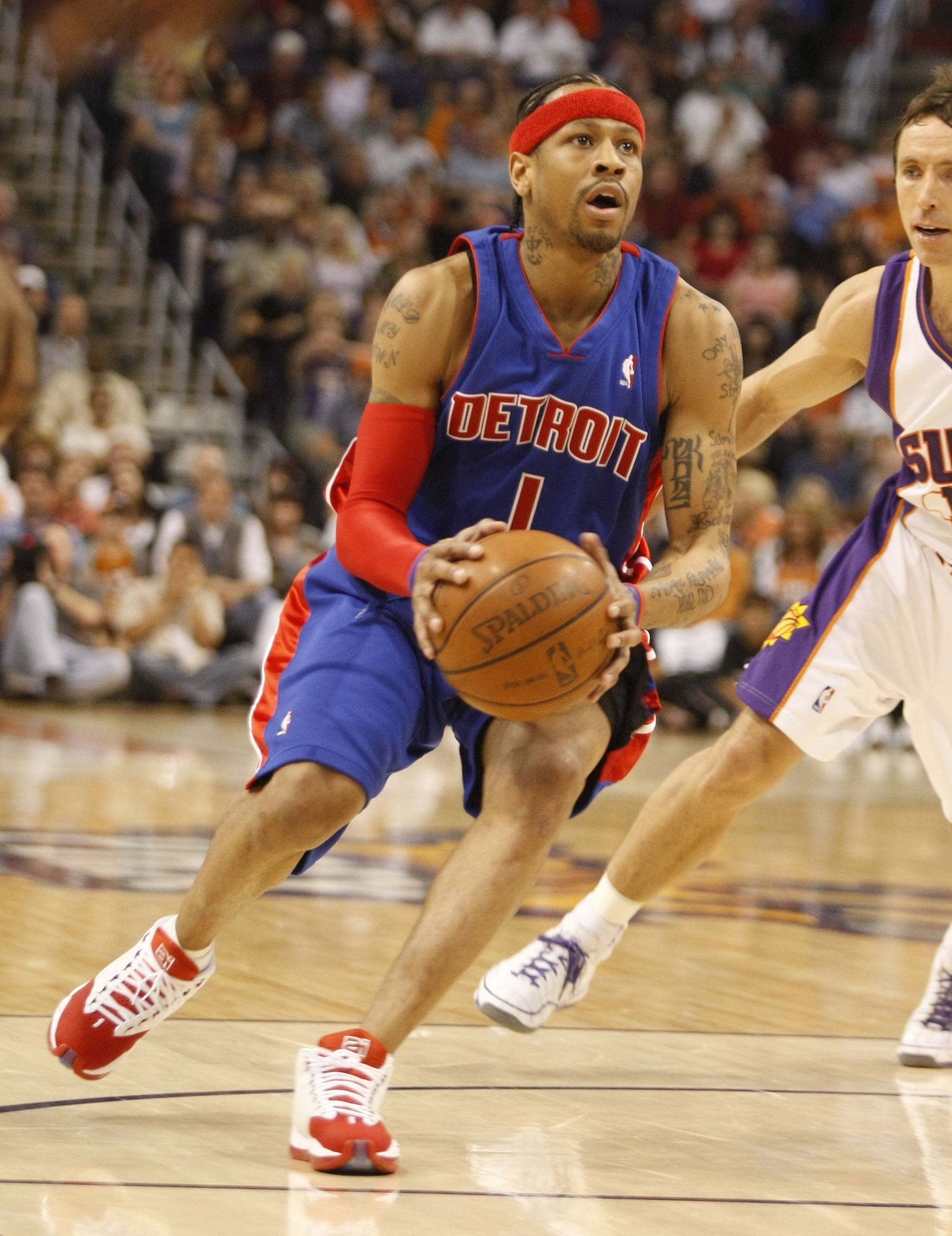
When Allen Iverson joined the Pistons at 33 years old, he was still putting up solid numbers, averaging 17.4 points per game. However, his tenure in Detroit quickly unraveled when coach Michael Curry was contemplating bringing Iverson to the bench to make room for Rodney Stuckey in the starting lineup.
Iverson famously bristled at the move, stating, “I’d rather retire before I come off the bench.” His refusal to accept the role disrupted team chemistry and Iverson parted ways with the Pistons at the end of the season. This stint marked the beginning of the end for one of the league’s most electrifying guards because the superstar never had to deal with talk of him being benched.
3. Manu Ginobili – (San Antonio Spurs, 2007)
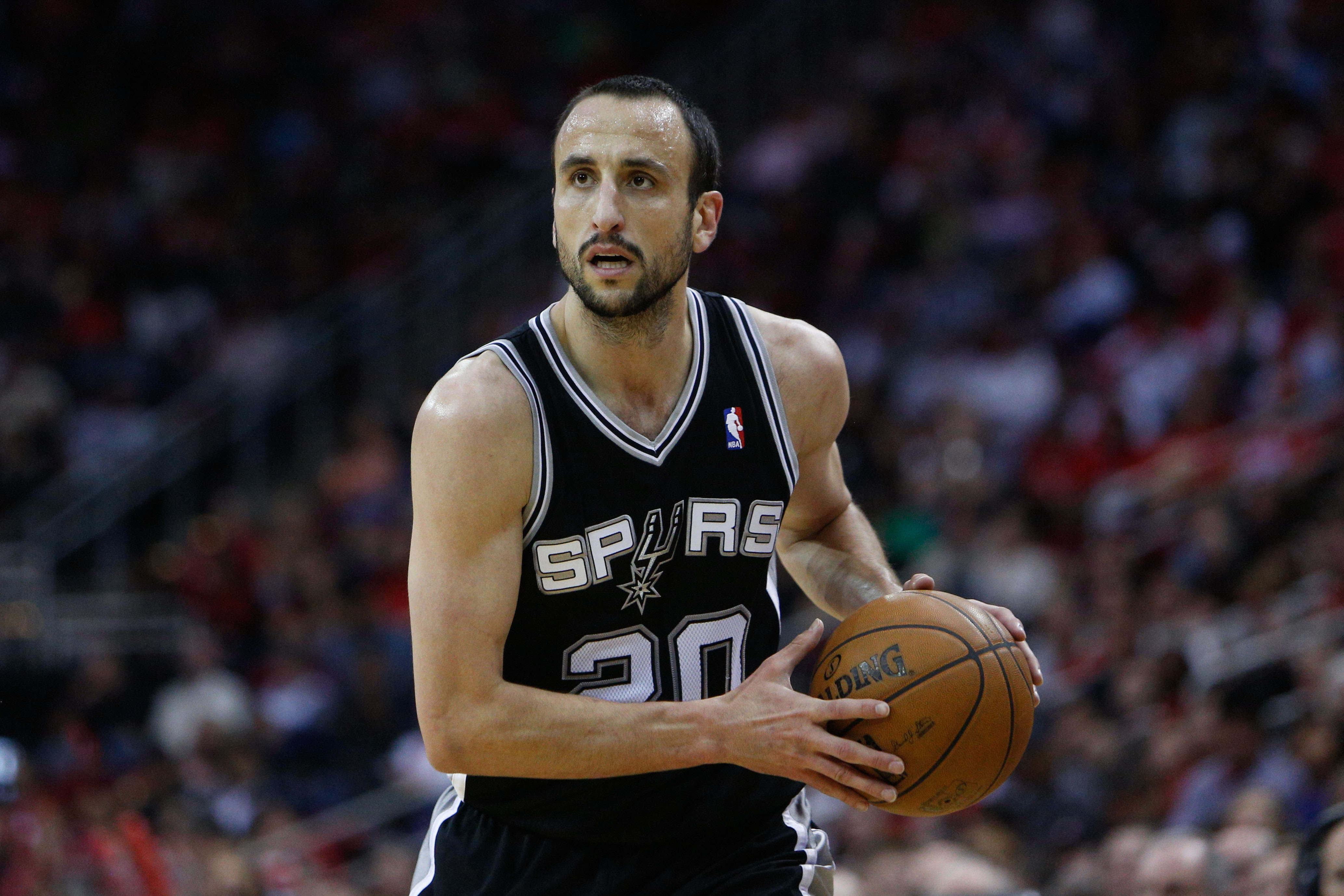
While Manu Ginobili’s benching was more tactical than punitive, it was still a bold move by coach Gregg Popovich. Ginobili was an All-Star at the height of his powers (posting 16.0 PPG, 4.4 RPG, 3.9 APG in 2004-05) when Popovich decided to use him as a sixth man to bolster the Spurs’ bench. At the time, it was considered surprising that an All-Star player was forced into a new role.
The move paid off spectacularly, however, as Ginobili embraced the role and became the NBA’s Sixth Man of the Year in 2008. Averaging 19.5 points, 4.8 rebounds, and 4.5 assists per game during the 2007-08 season, Ginobili redefined the impact a bench player could have and solidified his legacy as a Spurs legend. Unfortunately, Ginobili’s case of being benched in his prime was one of the very few examples of it working out in his favor.
4. Russell Westbrook – (Los Angeles Lakers, 2022)
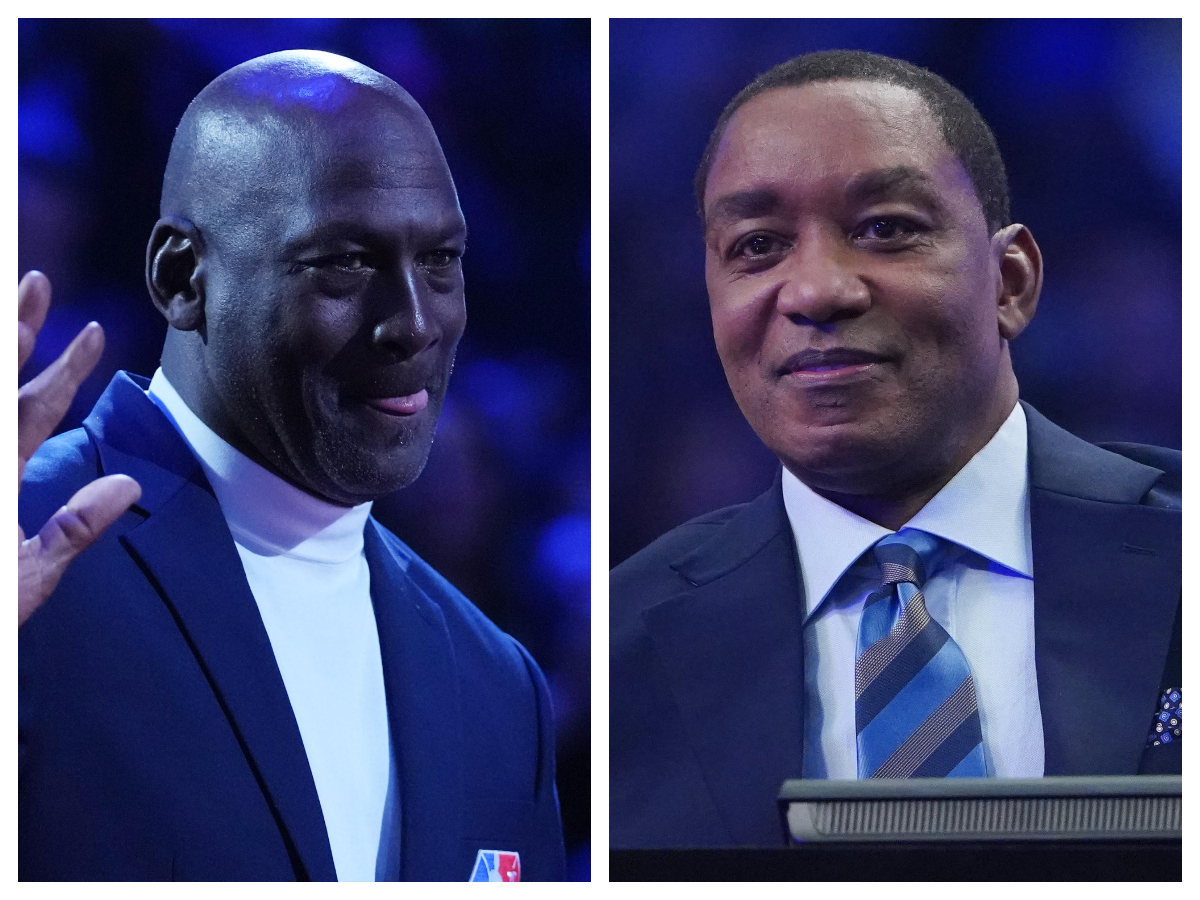
A former MVP and one of the league’s most explosive players, Russell Westbrook’s benching under coach Darvin Ham was a seismic shift in his career. With the Lakers struggling to find chemistry, Westbrook was moved to the bench to provide scoring and playmaking for the second unit.
Surprisingly, Westbrook thrived in the role, averaging 15.9 points, 7.5 assists, and 6.2 rebounds off the bench. Though the move highlighted his declining status as a superstar, it also showcased his adaptability and willingness to contribute in new ways. Westbrook is now engaging in a bench role for the Denver Nuggets in 2024-25 and is posting 12.9 points, 5.0 rebounds, and 6.8 assists per game.
5. Bradley Beal – (Phoenix Suns, 2025)
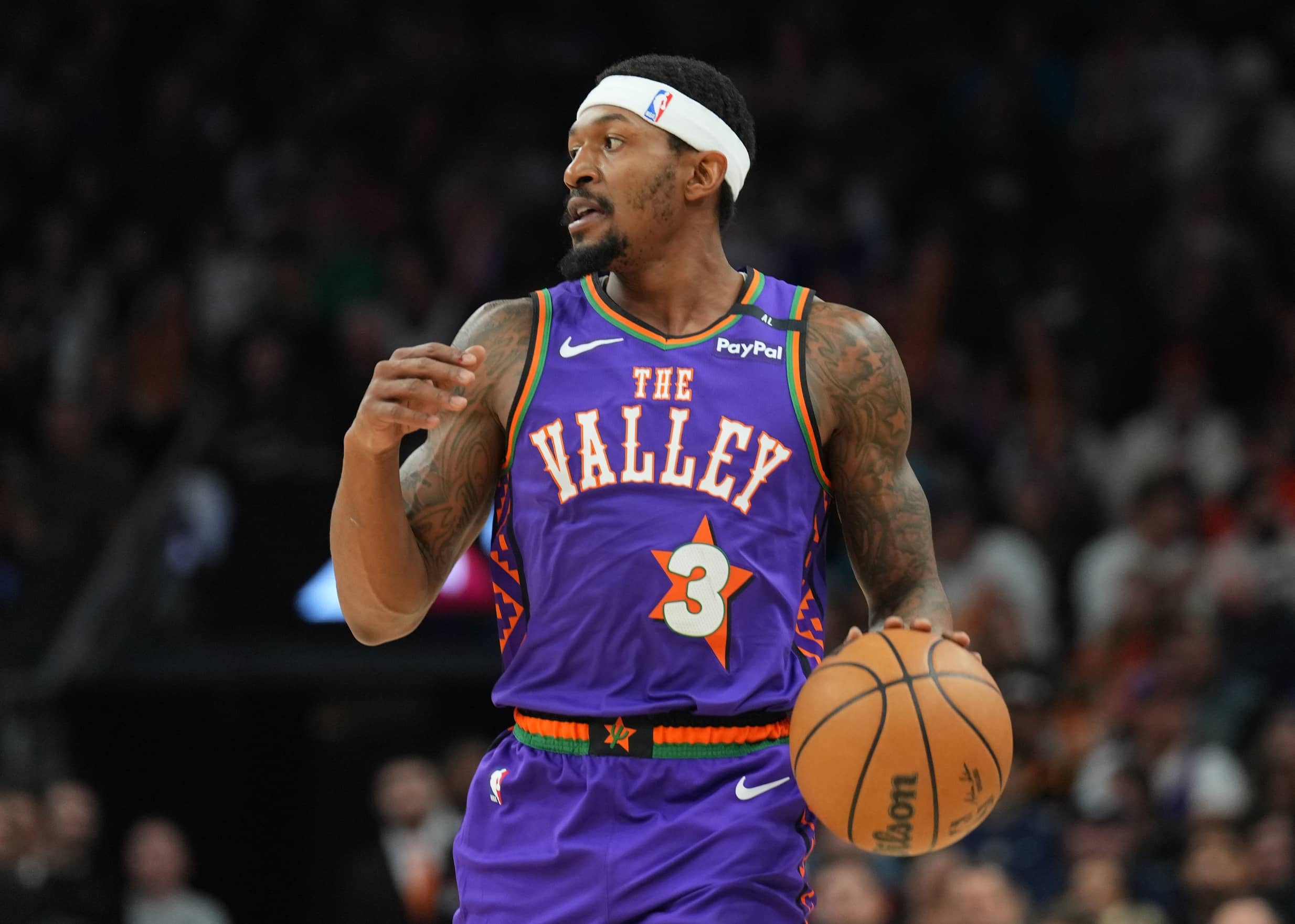
Bradley Beal’s benching by the Suns is still unfolding, but it has already sparked significant discussion. Beal, a three-time All-Star and one of the NBA’s most reliable scorers, has reportedly been benched to accommodate better the team’s superstar trio of Kevin Durant, Devin Booker, and Beal himself.
Speculation suggests the move might also be tied to a potential trade involving Beal and his no-trade clause. While the 31-year-old’s stats remain promising (17.8 PPG, 3.6 RPG, 3.2 APG), his future with the Suns is uncertain, and his benching could have significant ripple effects for the team. We have to wait and see how it all plays out but a player on a max deal getting benched is certainly a strange thing in the modern NBA.
6. Andre Iguodala – (Golden State Warriors, 2015)
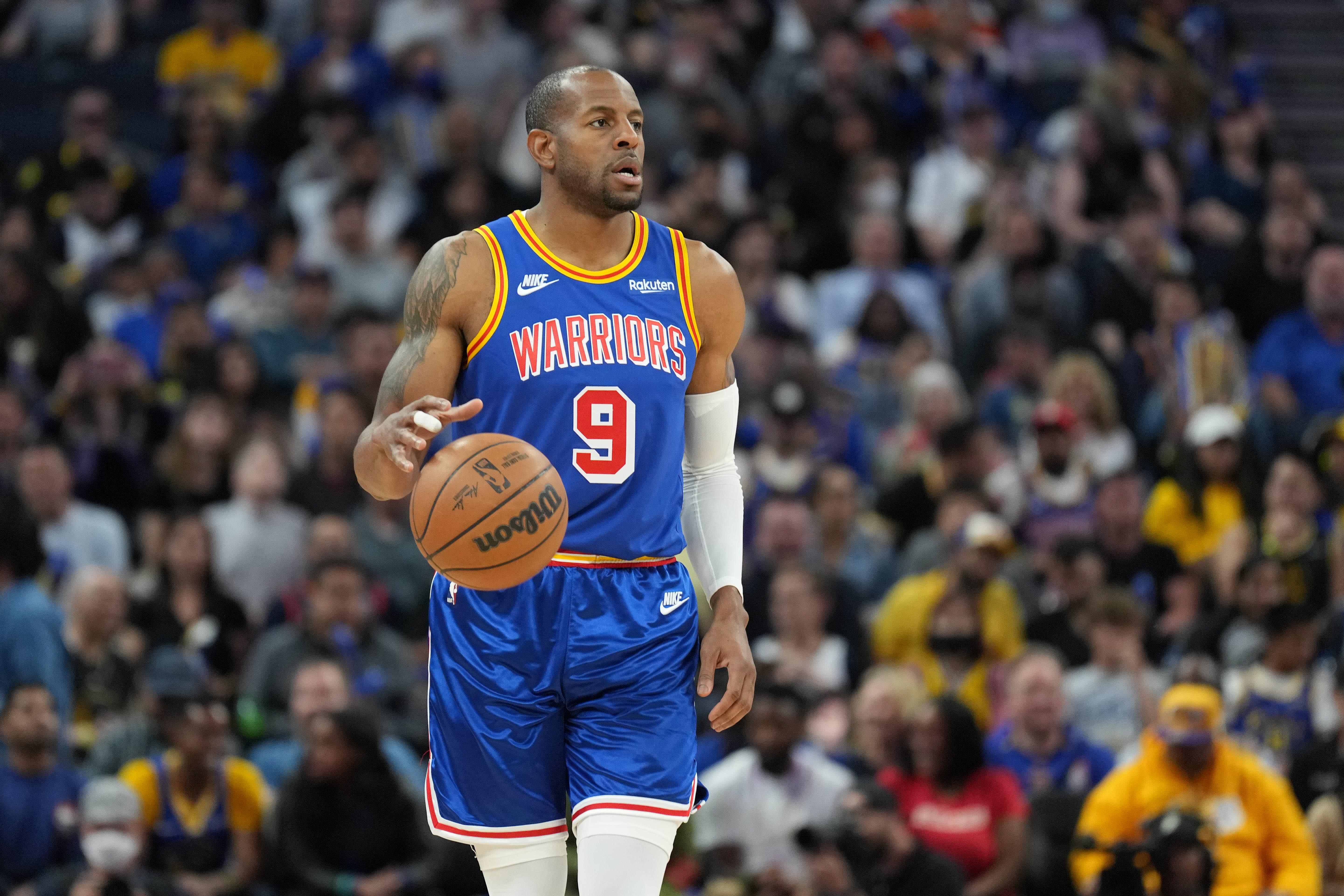
Andre Iguodala’s benching in 2015 was a masterstroke by Steve Kerr. After starting every game in his career to that point, Iguodala moved to the bench to let Harrison Barnes start. This decision was interesting considering Iguodala was a former All-Star in 2011-12 and started 82 games in five seasons before that.
The result? Iguodala anchored the Warriors’ second unit and played stellar defense against LeBron James in the Finals. Averaging 7.8 points, 3.3 assists, and 3.3 rebounds in the regular season, Iguodala elevated his play in the postseason and won Finals MVP—a rare feat for a bench player. While some might argue that Stephen Curry deserved the Finals MVP, Iggy truly changed the game for the Warriors.
7. Amar’e Stoudemire – (New York Knicks, 2013)
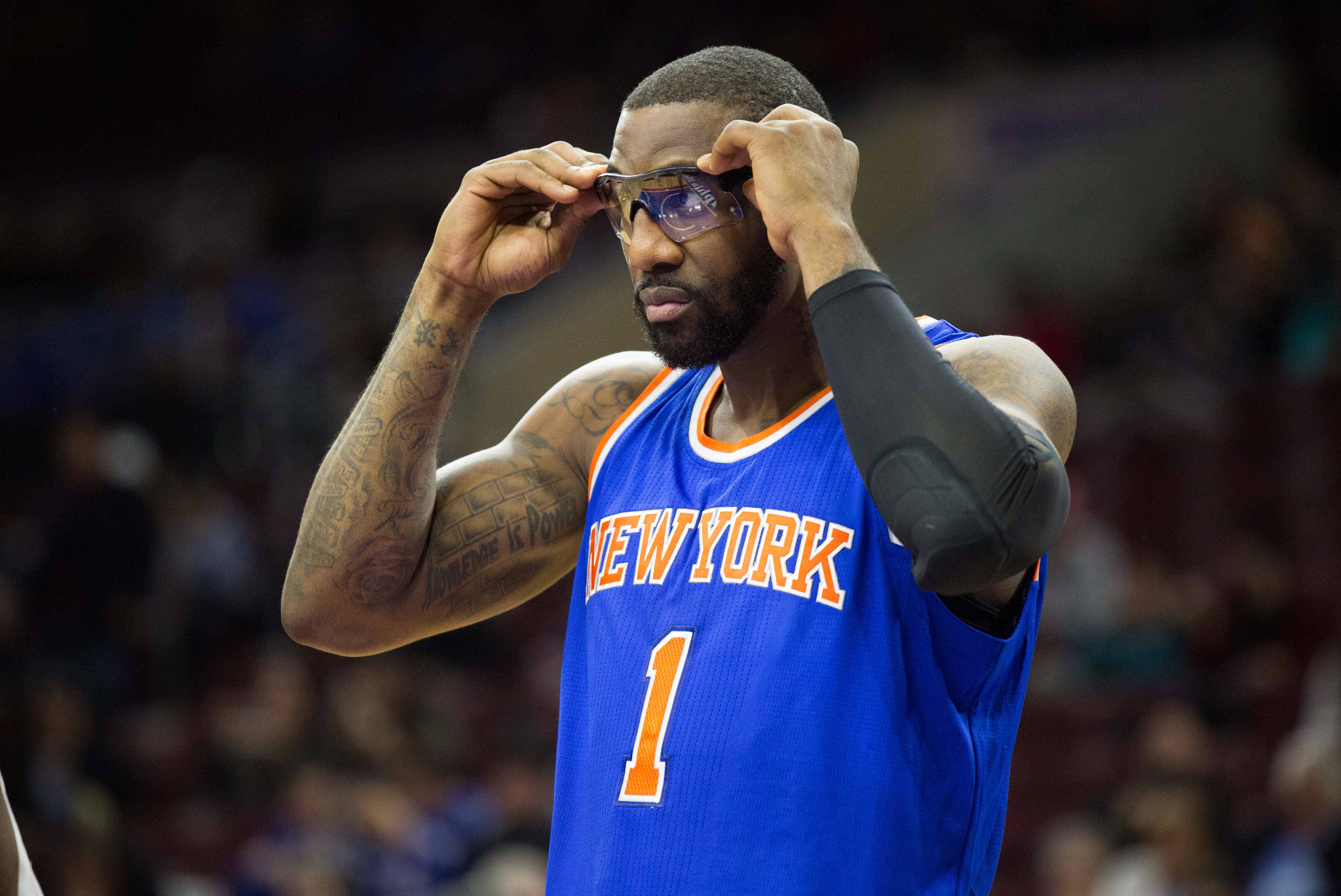
After joining the New York Knicks in 2010, Amar’e Stoudemire was the centerpiece of the franchise’s revival although the franchise’s acquisition of Carmelo Anthony changed that. By 2013, injuries had begun to take their toll, and Stoudemire’s athleticism had significantly declined. Under head coach Mike Woodson, Stoudemire was relegated to a bench role, having zero starts in 29 appearances.
Despite his diminished role, Stoudemire remained a valuable asset, providing scoring off the bench during the Knicks’ playoff push. His time off the court allowed for the emergence of younger players like Kenneth Faried and Carmelo Anthony to take center stage in the Knicks’ offense. Though he still possessed flashes of his old self, Stoudemire was often sidelined for important stretches, and he would go on to have only 14 starts in 65 games the following season for the Knicks.
8. Isaiah Thomas – (Cleveland Cavaliers, Los Angeles Lakers, 2018)
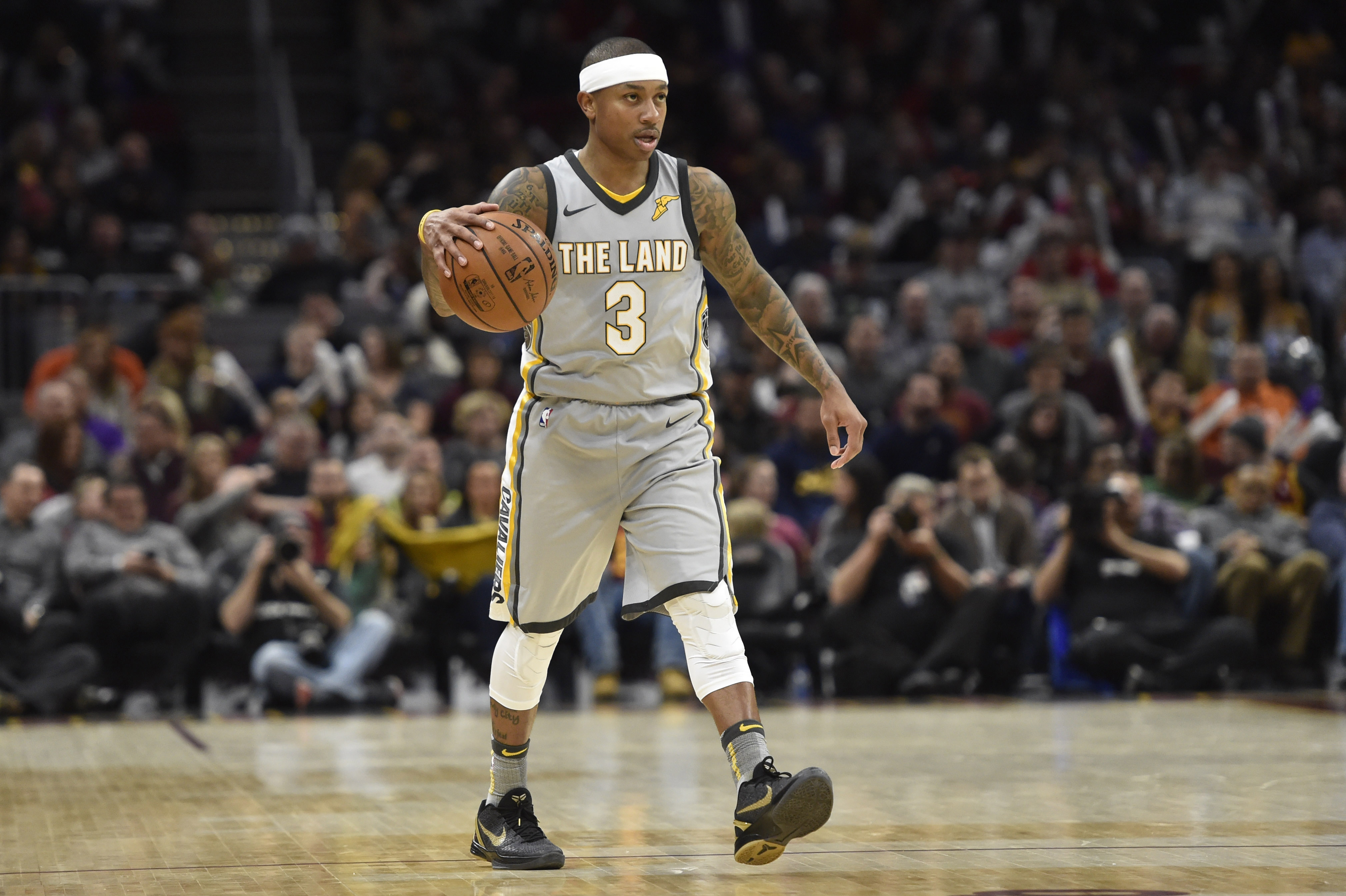
Isaiah Thomas’ fall from grace was one of the most dramatic in NBA history. After an MVP-caliber season in Boston, he was traded to Cleveland, where injuries and fit issues led to him being benched. In just 15 games with the Cavs, Thomas averaged 14.7 points but shot just 36.1% from the field.
After a midseason trade to the Lakers, Thomas accepted a bench role but struggled to regain his All-Star form. His career never fully recovered, as his next seasons included 39 total starts over the next six years. Until today, Thomas is trying to prove himself as a capable NBA point guard but his chances are slim to none.
9. Josh Smith – (Houston Rockets, 2015)
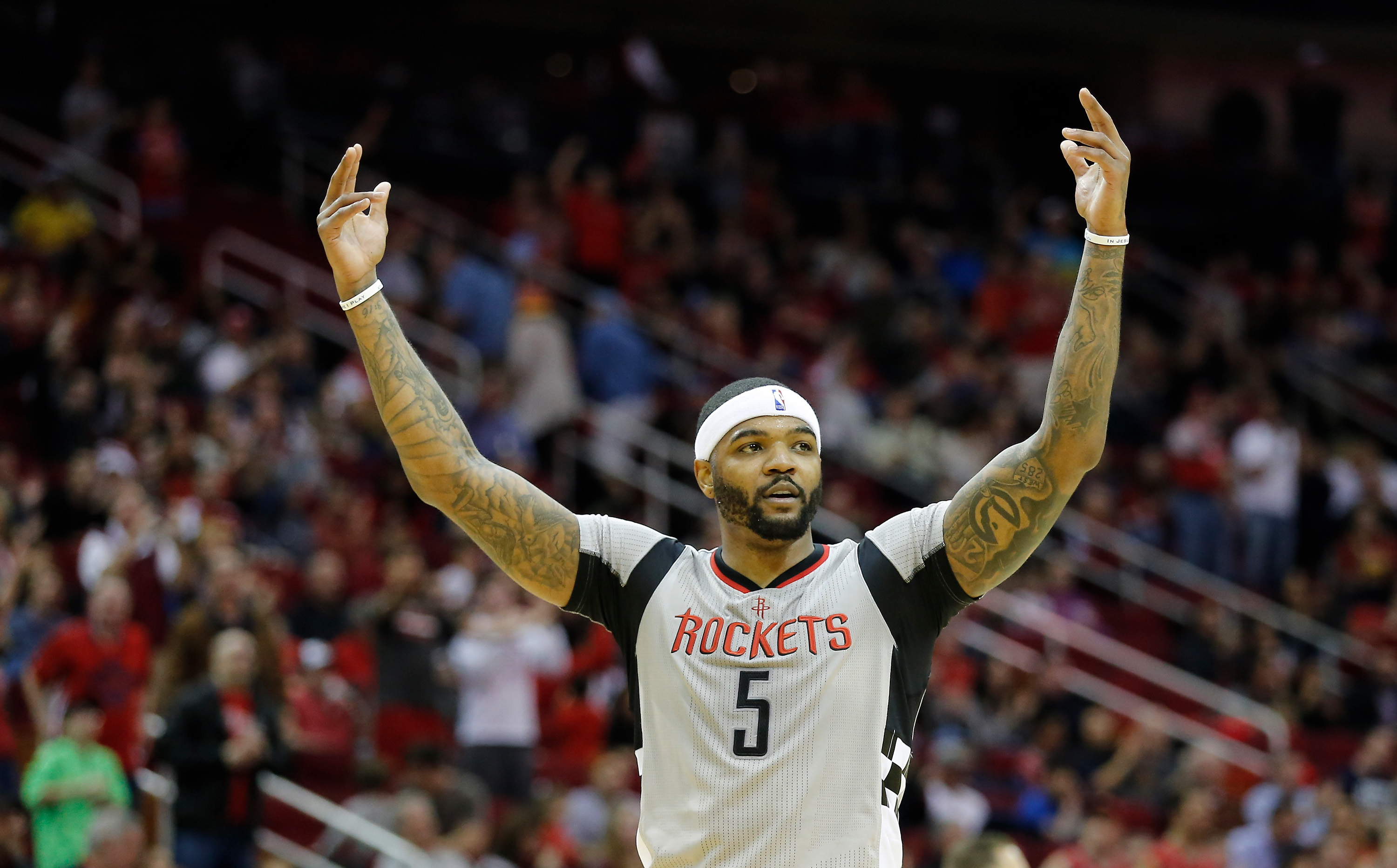
Josh Smith was once a dynamic force on both ends of the floor with a blend of athleticism and versatile scoring. However, his brief tenure with the Houston Rockets in 2015 proved to be a stark contrast to the high expectations set for him. After being waived by the Detroit Pistons earlier in the season, Smith joined Houston in the middle of the year, adding depth to their frontcourt.
But despite his reputation, his playing time quickly became limited, and he found himself benched with only seven starts in 55 appearances for the franchise. Smith’s inconsistent shooting and sometimes erratic decision-making made it difficult for head coach Kevin McHale to trust him in the playoff push. Though Houston made it to the Western Conference Finals, Smith’s benching forced him into a supporting role in a system led by James Harden.
10. Gilbert Arenas – (Orlando Magic, 2011)
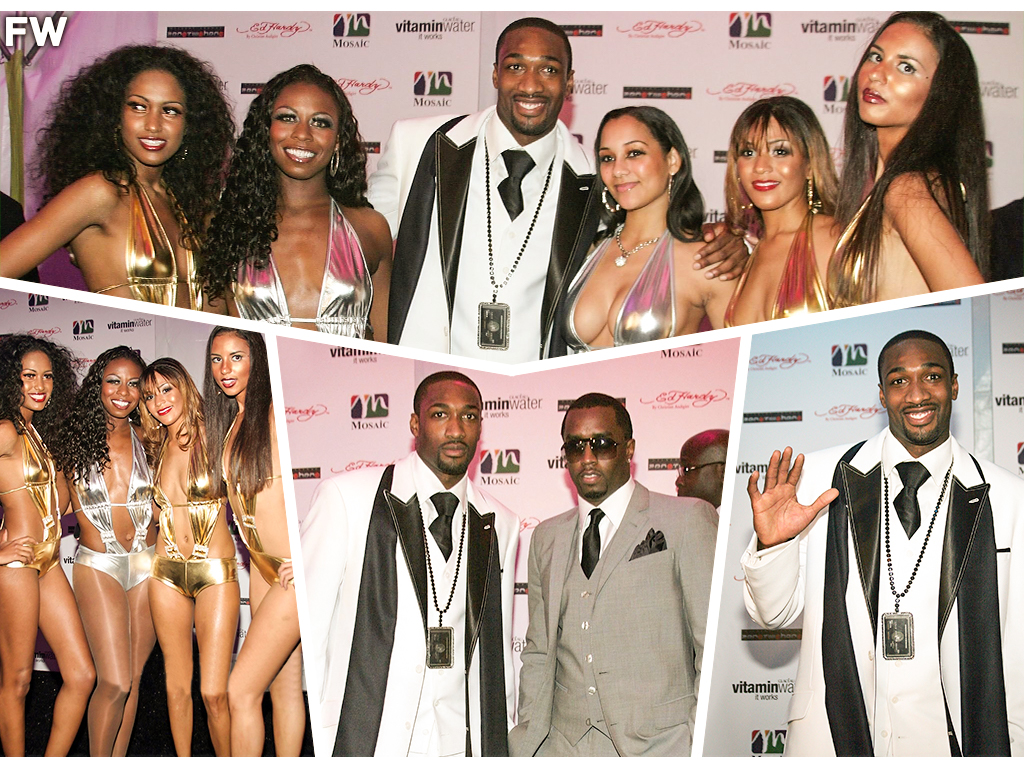
Gilbert Arenas was once one of the most electrifying guards in the NBA but after a series of injuries and a significant drop in production, Arenas was traded to the Orlando Magic in December 2010, hoping to rejuvenate his career. However, his time with the Magic quickly became a tale of unfulfilled potential.
By the 2011 season, Arenas was a shadow of the player who once averaged 29.3 points per game for the Washington Wizards. Despite his high salary and reputation, Arenas found himself struggling to fit into Orlando’s system alongside Dwight Howard and Jameer Nelson. As the Magic prepared for the playoffs, Arenas was used sparingly, and he was rarely a part of the rotation during their postseason run with only two starts in 49 appearances.
Thank you for being a valued reader of Fadeaway World. If you liked this article, please consider following us on Google News. We really appreciate your support.

